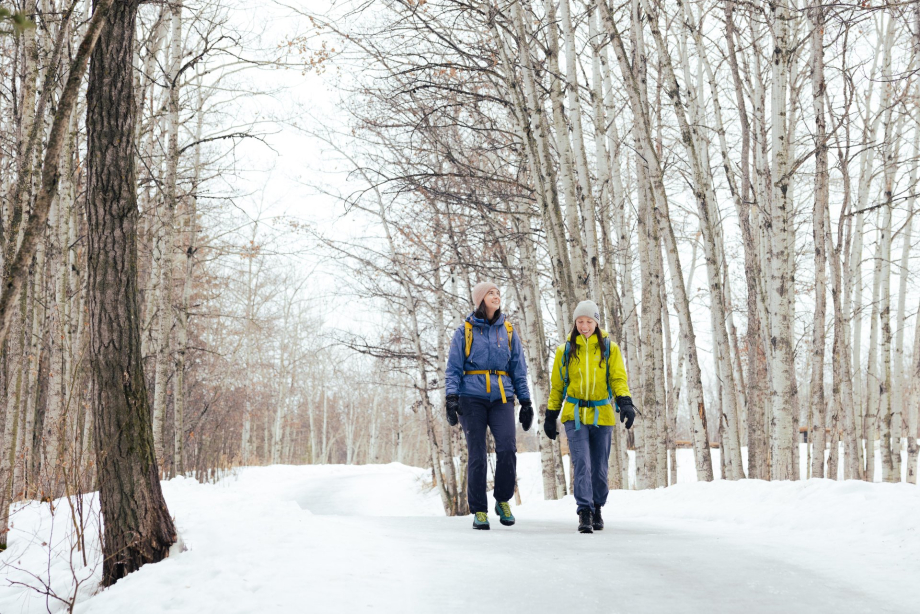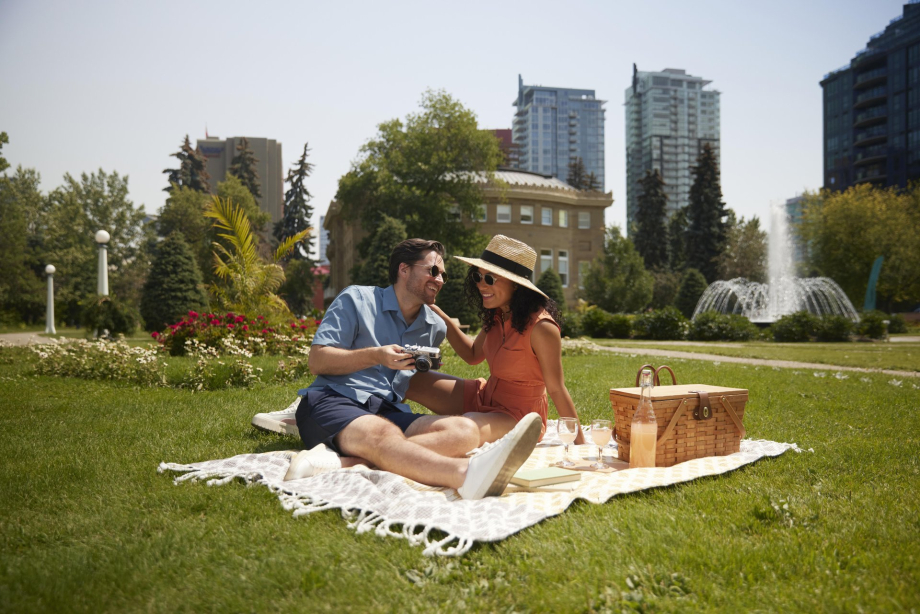Where to watch the northern lights in Calgary
Look up, breathe deep, and take in Calgary’s beautiful night sky.
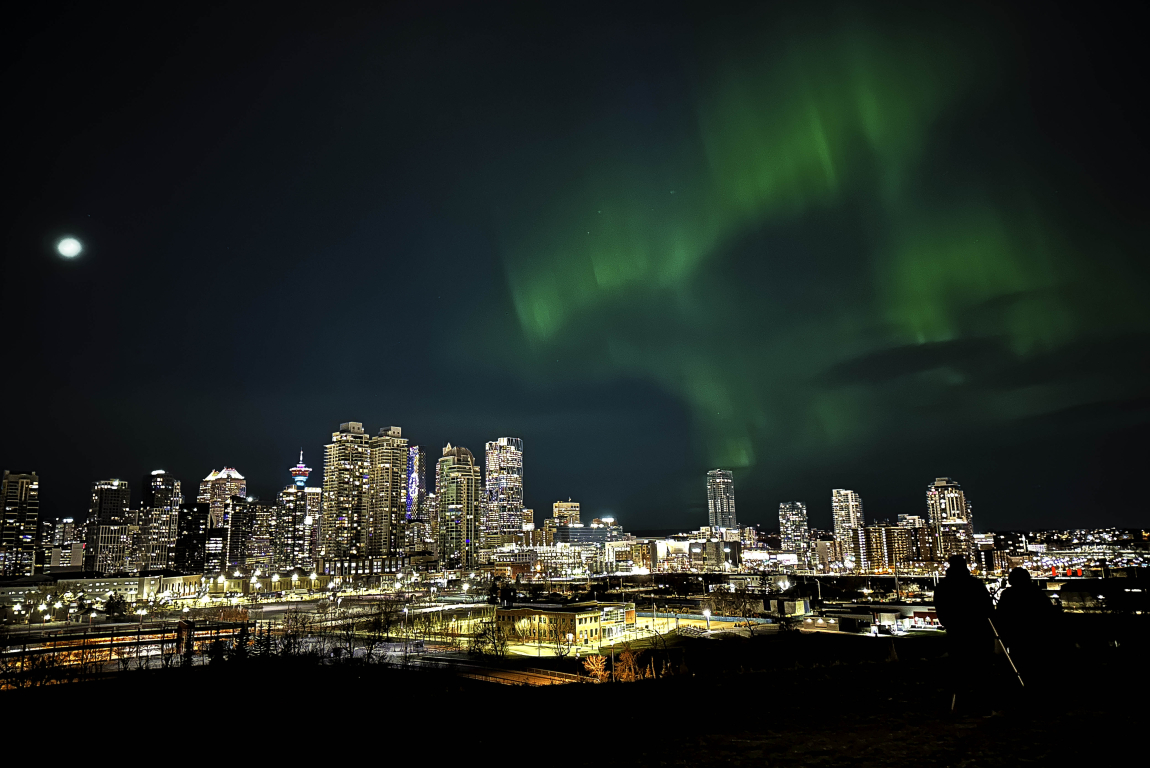
Calgary skyline (Credit: Tourism Calgary/Albrian Contreras)
The northern lights, or aurora borealis, are one of nature’s most breathtaking and elusive spectacles. Calgary’s open spaces offer incredible viewing opportunities on the nights when they dance across the sky.
Be prepared with top viewing locations, forecasting resources, and photography tips.
Top viewing locations
Nose Hill Park
Nose Hill Park dominates NW Calgary’s skyline. Its height and massive footprint make it ideal for gazing at the night sky. Pack a blanket and pick a cozy spot in the native grasslands covering the park.
Where to Park: Nose Hill has five parking lots, but you’ll want to park at the one on Shaganappi Trail for the best vantage point.
Fish Creek Provincial Park
Fish Creek Provincial Park is the second largest urban park in Canada. It’s sprawled along the SW edge of the city, away from the bright lights of downtown. Look for open clearings or paths that lead away from the lights of neighbouring communities.
Where to Park: There are plenty of options for parking. The main lot is at the Visitor Centre .
Crescent Heights Lookout
The Crescent Heights lookout offers amazing views of Calgary’s skyline on any night but especially if you’re lucky enough to see the aurora shining above. Find a bench and enjoy the show.
Where to Park: There’s no parking lot here, so park somewhere along Crescent Road NW .
Shaganappi Point Golf Course
Calgary’s most scenic golf course turns into one of the city’s best spots for cross-country skiing in the winter. Ski, snowshoe, or hike to the eastern edge of the course for a breathtaking view overlooking the city.
Where to Park: There’s a parking lot at the clubhouse that’s open year-round.
South Glenmore Park
You can see the aurora in the sky above and its reflection in the water below at the Glenmore Reservoir. After a short walk from the parking lot, you’ll be on the 14.5 km (9 mi) pathway that circles the reservoir.
Where to Park: The parking lot for South Glenmore Park is just off 24th St SW.
The Ann and Sandy Cross Conservation Area
If you’re willing to drive a bit out of the city, head southwest for 36km (22 mi) to The Ann and Sandy Cross Conservation Area . This rolling prairie oasis has been designated a Nocturnal Preserve by the Royal Astronomical Society of Canada, which means it has minimal light pollution.
Where to Park: Visitors can park in the visitor parking lot for $10.
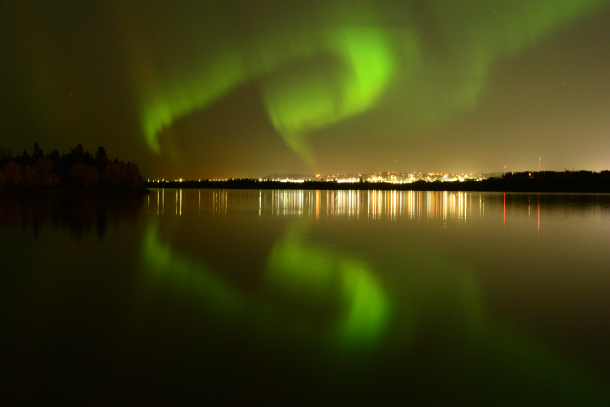
Glenmore Reservoir (Credit: Tourism Calgary/John Bicknell)
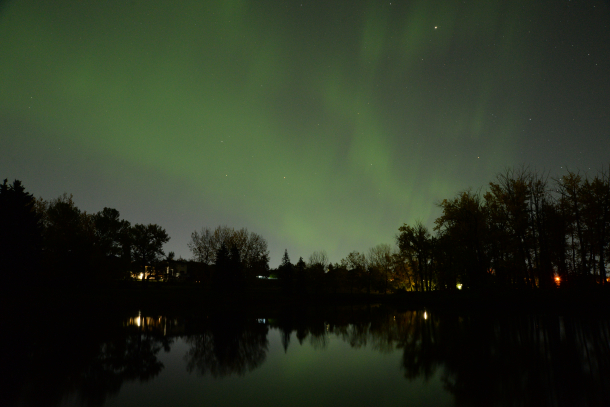
Carburn Park (Credit: Tourism Calgary/John Bicknell)
Northern lights forecast
Fun fact - the aurora borealis occurs when there are collisions between charged particles from the sun and the Earth's atmosphere. Aurora events can happen any time of year but are strongest between September and March. Scientists can predict these events up to three days in advance. Various websites forecast the likelihood of an upcoming aurora:
There’s also a passionate group of locals that monitor conditions in a Facebook group called Calgary Aurora Chasers .
Tips for capturing the perfect night sky photo
To properly capture the magic of the northern lights on camera, you’ll need to go beyond just some quick shots on your phone. Here are some tips to get the mind-boggling pictures you’re after.
Use a tripod: A steady camera is essential for long-exposure shots.
Adjust your settings: Set your ISO high (1600+), aperture wide (f/2.8), and exposure between 5 to 20 seconds.
Find foreground interest: Include silhouettes of trees or landmarks for dramatic composition.
Bring extra gear: Spare batteries are a must in cold weather.

Rothney Observatory (Credit: Travel Alberta/Rothney Astrophysical Observatory)
Rothney Astrophysical Observatory
The Rothney Astrophysical Observator y (ROA) is a research facility 43 km (27 mi) southwest of Calgary. It’s run by the physics and astronomy departments of the University of Calgary. The ROA has public events that are perfect for anyone interested in astronomy. You can look through incredibly powerful telescopes and talk with astronomers about the faraway wonders that you’re seeing.
